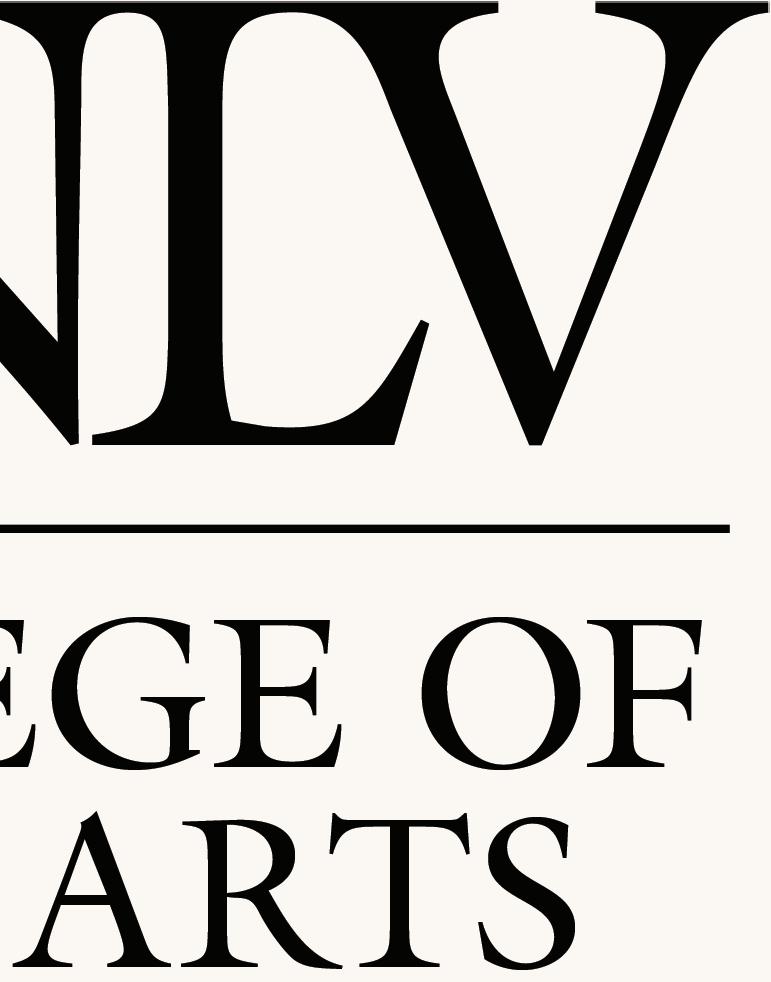
Our bodies souls and spirits are a map, a testimony to the ravages of our enslavement, the cruel legacy of legal segregation and lack of access to wealth, good employment, stable housing and good health care. And our psyches have been twisted and turned inside out by the stories we tell ourselves. And the stories that are told about us. Stories that have sometimes saved and sometimes sabotaged us. The Strong Black Woman. The Angry Black Woman. The Black woman who says yes to everyone but herself.
MARITA GOLDEN The Strong Black Woman: How a Myth Endangers the Physical and Mental Health of Black Women
Published by UNLV Integrated Graphics Services
Integrated Graphics Services
University of Nevada, Las Vegas Box 1028
4505 S. Maryland Pkwy. Las Vegas, NV 89154
Copyright © Marjorie Barrick Museum of Art
Marjorie Barrick Museum of Art University of Nevada, Las Vegas Box 4012
4505 S. Maryland Pkwy. Las Vegas, NV 89154
Artworks by Brent Holmes, Q’shaundra James, Professor Shelley Kelly, Kris Lumague, Gussie Gregory Mayes, A. Moss, Jasmine Nicole of Kapturing Moments, Jeff Scheid, Lester Sloan, Carl Summerlin, UNLV University Libraries Special Collections & Archives, Mikayla Whitmore, Ms. Nikki Woods, and family photographs provided by Erica Vital-Lazare © 2021 by Brent Holmes, 2021 by Q’shaundra James, 2017 self-portrait by Professor Shelley Kelly, 2021 by Kris Lumague, 1921 by Gussie Gregory Mayes, 2017, 2021, 2020 by A. Moss, 2019 by Jasmine Nicole of Kapturing Moments, 2001, 2013, 2019, 2020 by Jeff Scheid, 1984, 1989, 1995 by Lester Sloan, 2014 by Carl Summerlin, ca. 1905–1935, 1953, 1955, 1966, 1967, 1968, 1970s, 1974, 1975, 1990s, 1998, 2006 courtesy of UNLV University Libraries Special Collections & Archives, 2021 exhibition photographs by Mikayla Whitmore, 2015, 2016, 2018 self-portraits by Ms. Nikki Woods, and 1974 & 1983 family photographs provided by Erica Vital-Lazare.
Catalog designed by Chloe J. Bernardo
All rights reserved. No part of this book may be reproduced or used in any manner without the prior written permission of the copyright owner, except for the use of brief quotations in a book review.
MARJORIE BARRICK MUSEUM OF ART UNIVERSITY OF NEVADA, LAS VEGAS SEPTEMBER 24, 2021 – FEBRUARY 26, 2022

So de white man throw down de load and tell de nigger man tuh pick it up. He pick it up because he have to, but he don’t tote it. He hand it to his womenfolks. De nigger woman is de mule uh de world so fur as Ah can see.
ZORA NEALE HURSTON Their Eyes Were Watching God
No one has ever written us with such brutal, swing-low, pear-blossomed clarity as Zora Neale Hurston. Her “womenfolks” are the “us” of Toni Morrison and Walker—both Margaret and Alice; they are the kitchen mothers of Paule Marshall, the generations of Gayle Jones, bell hooks, and Harriet Jacobs. They are the “us” I eternally consider. They are the women I breathe: my mother, my sisters—both in my home and in the streets—my aunts, my grandmothers.
I was a child when I learned in a grade school textbook the very thing I’d always known deep in the marrow: that all that we drink, swim in, adorn ourselves with, and jump towards the sun to meet, passed first through the hands, the body, and mind of a Black woman.
It was here that they brought ‘em. They taken ‘em out of the boats right here where we’s standing. Nobody remembers how many of ‘em it was, but they was a good few ‘cording to my gran’ who was a little girl no bigger than you when it happened.

 PAULE MARSHALL Praisesong for the Widow
PAULE MARSHALL Praisesong for the Widow

It is beyond biblical. It is scientific. The DNA of what we know as modern humans is linked in a chain of bloodline and memory to a shared mitochondrial mother, a biological Eve, who walked the planet more than 200,000 years ago across the savannahs of South Africa. She marches silently still in the ganglia, necessary, stretching through the neurons of every poet, mogul, physicist, Proud Boy, pimp, and preacher. She sleeps behind the pineal. Crested at the apex like new money, she is the eye that sees without being seen.
In a nation that misguidedly boasts an unassailable exceptionalism, Black women die in childbirth at three times the rate of their non-Black sisters and in the process of living are seven times more likely to die violently, with that number increasing for vulnerable Black girls and Black sisters in trans bodies.
Homespun homilies and adages framed on the walls of country kitchens in crossstitching may tell a truth that lies at the root of our invisibility and terrifying recognition—“familiarity breeds contempt,” “absence makes the heart grow fonder.” We feel we know her too well. The Black woman sits at the core of us. She is Claudette Colvin tired, an unwed, under-educated young mother refusing to relinquish her seat on a Birmingham bus. She is the Hottentot Venus continuing to smoke her inqawe, cleansing for demons, even as the moneyed men of Europe poked and prodded at the gift of her thighs. We are Aristotle’s Unmoved Mover—the mind of God considering itself— noesis noeseos. We are the coiled one rising from the base of the kundalini spine, spinning through the chakras. The electric slide quantifying—we are the mysticism of Ms. Dionne Warwick hawking daily revelations for the Psychic Friends Network. We are Justice Ketanji BrownJackson showing up for an embattled nation just in time to read the small print.
Elemental, we are 200,000 years funneling into the year of our Lord 1893 when our grinning image would save a bankrupt pancake company, building a monopoly with a small succession of poorly-compensated Black women papered onto boxes of flour. No other greater irony, until, a hundred years later, an actor-turnedpresidential candidate would climb to the highest seat in the land using the face of a Black woman to brand the notion of the Welfare Queen. Such a moniker paired with shots of Linda Taylor headed for court in a Cadillac and fur coat became a salty morsel tucked beneath the shell in a shell game designed to hide the true beneficiary of the candidate’s intended trick in trickle-down economics.
The exhibit Seeing/Seen opens with a 1904 photo of a Black woman working on an early Las Vegas homestead. She stands alongside a baby buggy, white child tucked neat inside. The woman is unnamed and her gaze is cast down. Her eye is on the child but not. She refuses to give the camera what it wants, refuses to acknowledge or deny the black pups placed in the buggy by her employers as a joke on either side of the white child.
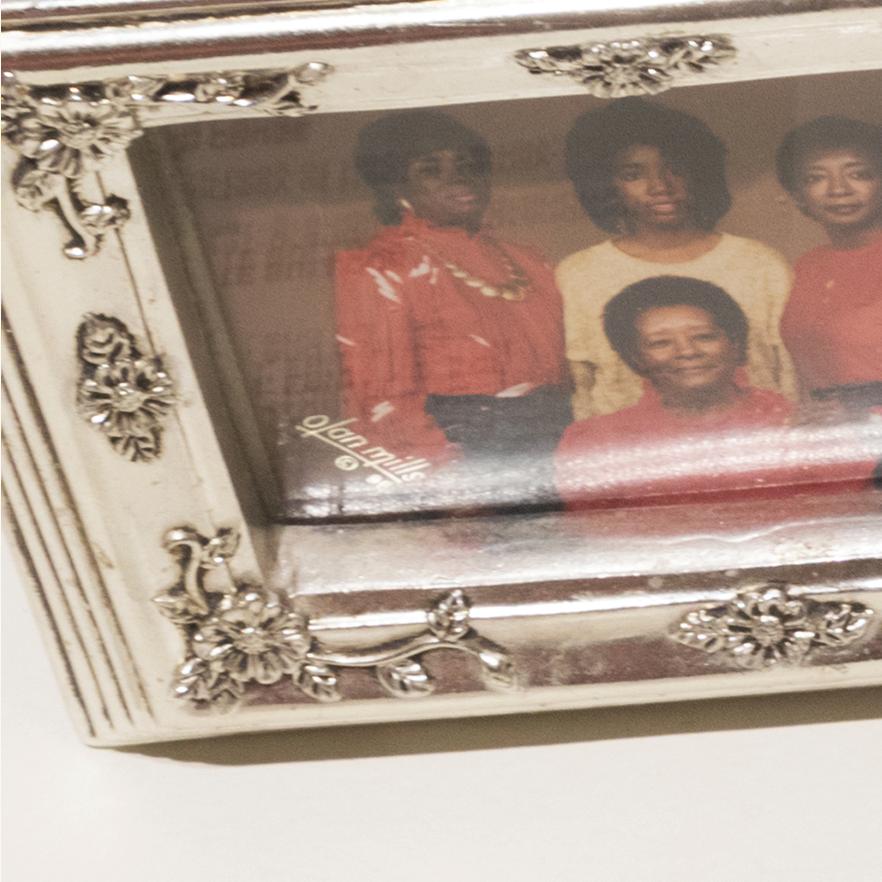
















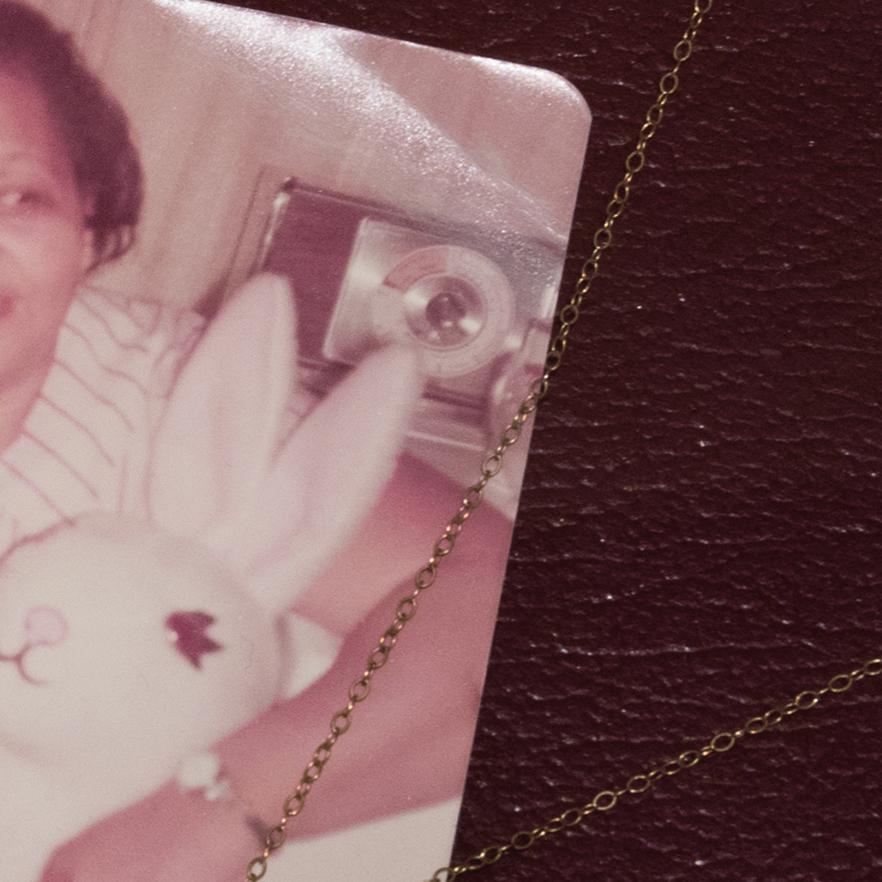










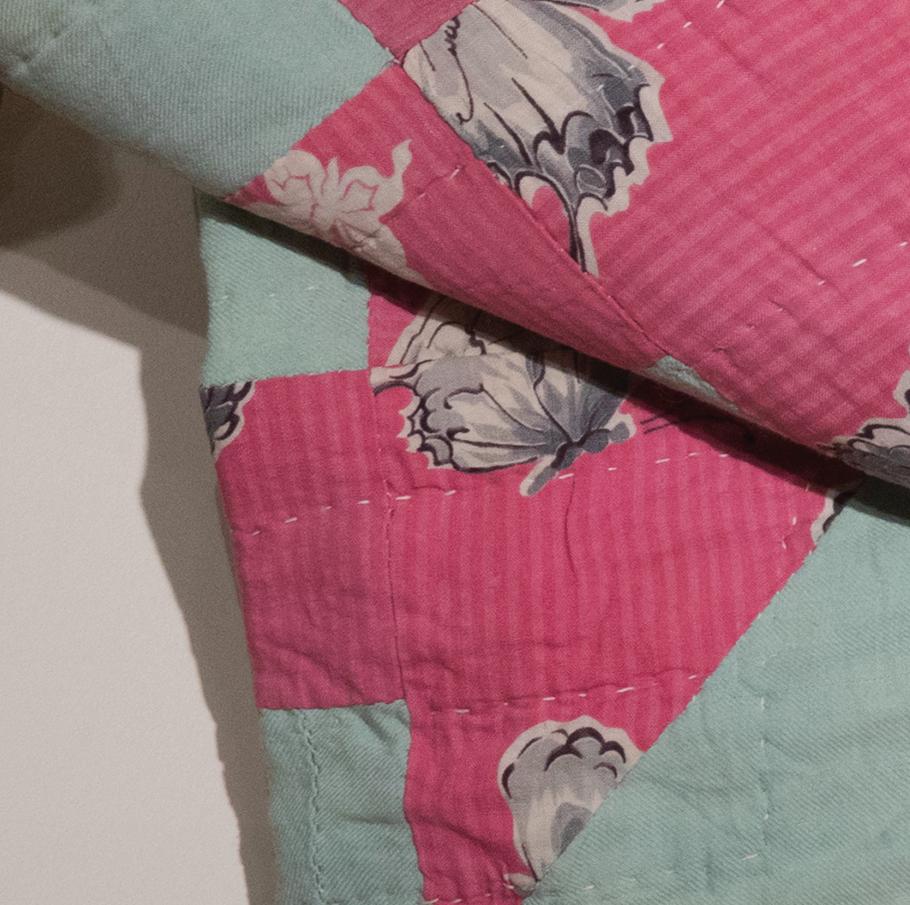






To be black and a woman is to sift through the waves, in search of purpose. Before we are forced to surrender to one of our many kinds of death, we will let Joy sear every inch where breath once belonged, until pain is phantom and we stand no more.

 FAYLITA HICKS Hoodwitch
FAYLITA HICKS Hoodwitch
I know this woman’s face. And I know her posture. She has sealed herself inside the pouf of Victorian sleeves, her banner of war tucked into the dark crown of her hair. But beyond the veil of a seeming fatalistic futility is a message that pulls us beyond simple seeing, so that all who have ears to hear may hear, and all who have the eyes of the Great Mother to see, may see. Even in her unnamed power, her downward gaze anticipates the coming of a multi-billion dollar medical industry harvested from the cells of a Black mother from Baltimore. With that gaze she has already seen Mae Jemison and Jessica Watkins shuttling through space and time.
In one of my favorite passages from Alice Walker’s The Color Purple—Shug Avery cups Celie’s face between both palms and looks in deep. Beaten down by other gazes that have meant her ill, Celie does not recognize her own grace. She tries to turn away. She has forgotten and, in love, is reminded that what she beholds through her sister-lover is the form and frame of God.
As you revisit this exhibit, look close. See us, seeing us—being seen.
 HECTOR VITAL-LAZARE CURATOR
HECTOR VITAL-LAZARE CURATOR
I am Loved.
I am Loving.
I am Powerful.
I am Privileged.
I am Free.
I am in bondage.

I am Spirit made manifest.

wherever she was there was space and ancestors came through, they were drawn to her like they had been drawn to all the shores and like water they began to shape the stone of her back into sand. She recognized the shape of stardust, she breathed deeper to feel them moving.
PAULINE GUMBS M Archive
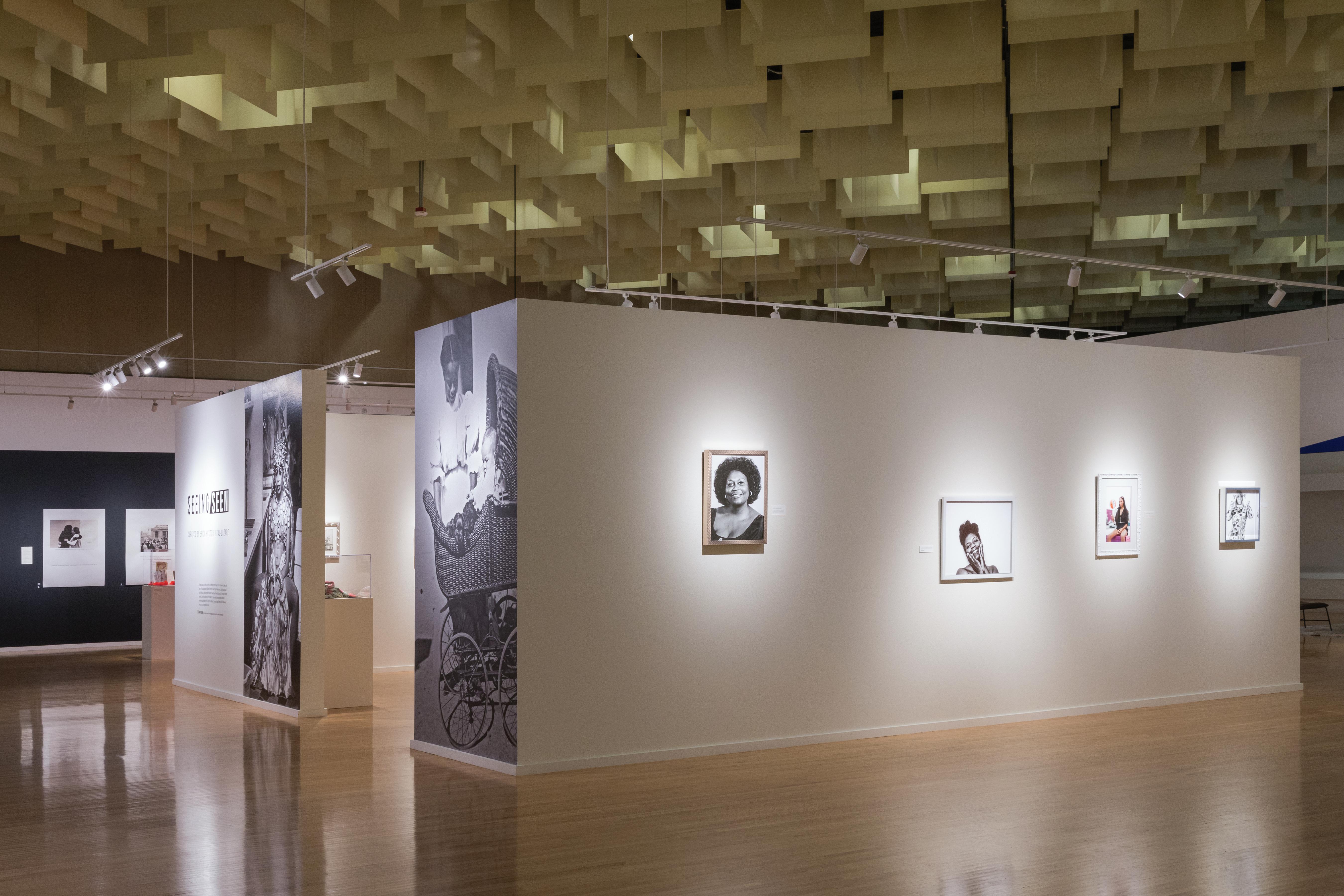

“I don’t want to have to be unapologetic for you to hear me. I want to be able to whisper, if I want to.”A’JA WILSON Las Vegas Aces, Youngest MVP in WNBA history
RUBY DUNCAN Activist, organizer of the 1972 march, shutting down the Las Vegas Strip and as a result, brought the Federal Food Stamps Program and the Special Supplemental Nutrition Program for Women, Infants, and Children (WIC) to poor people throughout the state of Nevada.

“We need to have something to offer our people. Come together every so often— organizing, that’s how we got out.”
Dear Us


You were the rim of the world—its beginning. Primary. In the first shadow the new sun threw, you carried inside you all there was of startled and startling life. And you were there to do it when the things of the world needed words. Before you were named, you were already naming.
TONI MORRISON
A Knowing So Deep


He told me I was his property; that I must be subject to his will in all things. My soul revolted against the mean tyranny.
 HARRIET JACOBS Incidents in the Life of a Slave Girl, 1861
HARRIET JACOBS Incidents in the Life of a Slave Girl, 1861
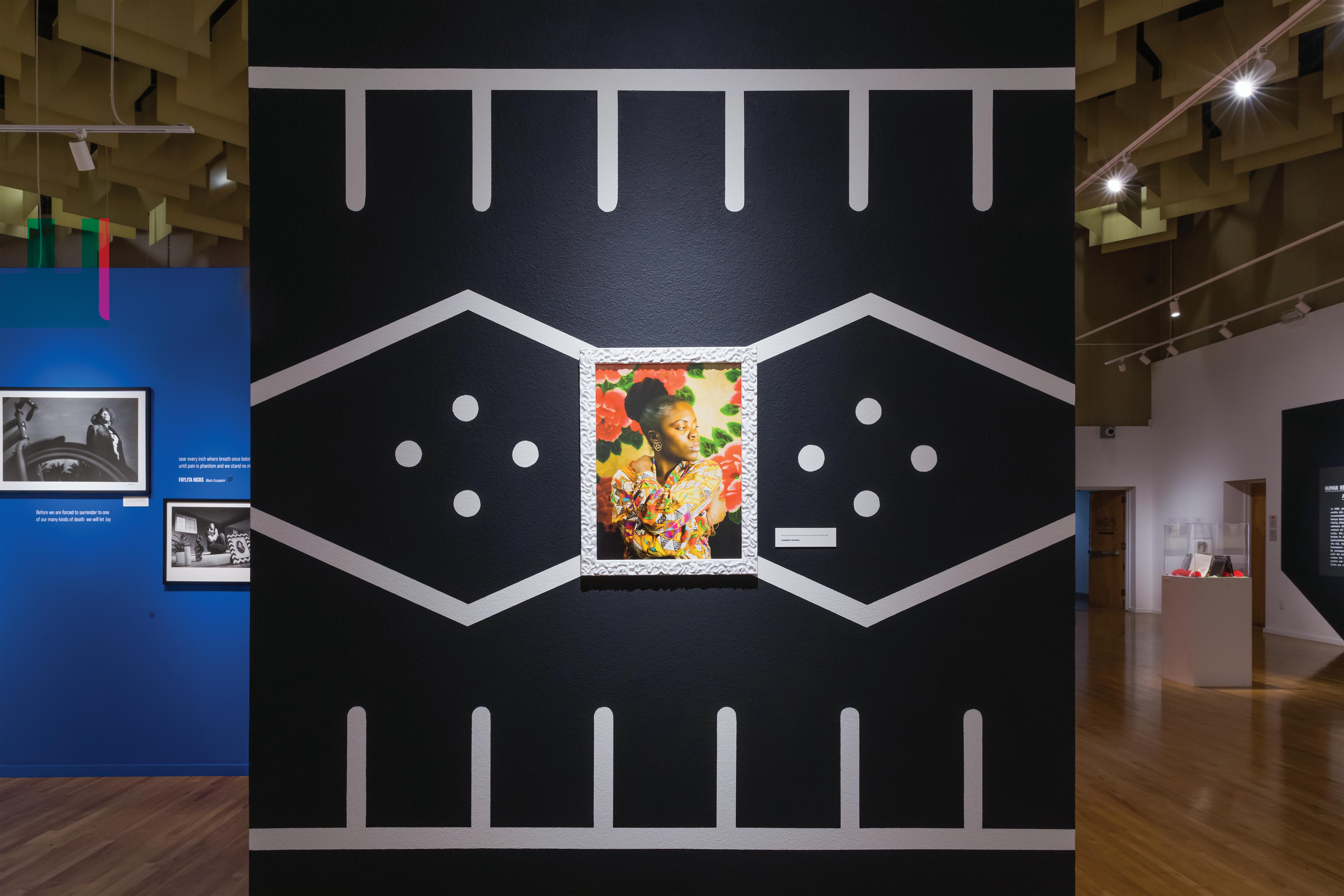
ABOUT THE CURATOR
Erica Vital-Lazare is a professor of creative writing and Marginalized Voices in Dystopian Literature at the College of Southern Nevada. She has received grants and awards from the Zora Neale Hurston/Richard Wright Foundation, Virginia Commonwealth University’s Hilliard Endowment, and the Nevada Arts Council. Her work has been featured in Catalyst, Sojourner, Thrice and Callaloo II. She is co-producer of the photo-narrative installation Obsidian & Neon: Building Black Life and Identity in Las Vegas and editor of the forthcoming Of the Diaspora, a series revisiting classic Black works in literature with McSweeney’s Press.

TAMMI CAVE, Jubilee dance, Bally’s Las Vegas, 2001. Photograph by Jeff Scheid.
PRETTY BABY, 1989. Color photograph by Lester Sloan. Courtesy of the artist.
FLO JO, 1984. 35 mm color photograph by Lester Sloan. Courtesy of the artist.
DELLA MAE GIVENS, Paul Williams’ Widow, 1995. Photograph by Lester Sloan. Courtesy of the artist.
A SHOWGIRL AT THE MOULIN ROUGE
SWIMMING POOL, May 22, 1955. Nevada State Museum, Jay Florian Mitchell Collection. UNLV University Libraries Special Collections & Archives.
LOLA FALANA, 1966. Sands Hotel & Casino Public Relations Records. UNLV University Libraries Special Collections & Archives.
NANCY WILSON, Singer Nancy Wilson’s birthday party at the Sands Hotel, 1968. Sands Hotel & Casino Public Relations Records. UNLV University Libraries Special Collections & Archives.
EMMA JEAN HECTOR, ELIZABETH HARPER, GRACE RHODES, ERICA HECTOR, 1983 ERICA HECTOR WITH AUNT ELIZABETH HARPER, 1974 MA’KHIA BRYANT MILDRED V. BROWN, “Loved the Lord and was full of love.” Bible, rosary, and cross. Photo courtesy of grand-daughter, Rona Wiggins.
Quilt made circa 1921 by the hands of Gussie Gregory Mayes, paternal greatgrandmother of Harriet E. Barlow, PhD.
MS. CHINA HUDSON, Performer, activist, and founder of Girls’ Rite of Passage, 2019. Photograph by Jeff Scheid.
TEENA ACREE, Founder Rolling4Ronnie, 2020. Photograph by Jeff Scheid.
MATICIA SUDAH, Peaceful Warrior Realtor and Kemetic Yogini, 2019. Photograph by Jeff Scheid.
EXHIBITION VIEW: Q’SHAUNDRA JAMES, SAINTS: THE MOTHERS OF GYNECOLOGY, 2021. Digital painting. ARIEL HALL, Daughter, musician, sister, college student, 2021. Photograph by Brent Holmes.
Q’SHAUNDRA JAMES, SAINTS: THE MOTHERS OF GYNECOLOGY, 2021. Digital painting.
MAIDS WORKING AT THE MAXIM, CULINARY UNION,LAS VEGAS, NEVADA, 1990s. Culinary Workers Union Local 226 Las Vegas, Nevada Photographs. UNLV University Libraries Special Collections & Archives.
QUEEN ESTHER SARR, Founder of Healing By The Light of Moon, 2017. Photograph by A. Moss
EXHIBITION VIEW: RUBY DUNCAN, ca. 1970s. North Las Vegas Library Collection. UNLV University Libraries Special Collections & Archives. LEISA SMITH MOSELEY, Political Strategist and Activist, 2014. Photograph by Carl Summerlin. A’JA WILSON, Las Vegas Aces, One of the youngest MVPs in WNBA history, 2021. Photograph by Kris Lumague. NYREE OARD, 2021. Photograph by A. Moss.
A’JA WILSON, Las Vegas Aces. One of the youngest MVPs in WNBA history, 2021. Photograph by Kris Lumague.
RUBY DUNCAN, ca. 1970s. North Las Vegas Library Collection. UNLV University Libraries Special Collections & Archives.
EXHIBITION VIEW
ARLONE SCOTT, ca. 1975. Elizabeth Nelson Patrick Collection. UNLV University Libraries Special Collections & Archives.
ALDINE WEEMS, Administrator Operation Life, ca. 1970. Ruby Duncan Collection. UNLV University Libraries Special. Collections & Archives.
MARY FOUNTAIN. A fighter of injustice. Marcia Washington’s mother. ca. 1953 African Americans in Las Vegas: A
15
Collaborative Oral History Project.
UNLV University Libraries Special Collections & Archives.
MARCIA WASHINGTON AND HER CHILDREN Photograph of Marcia Washington and her children at Dave Washington’s firefighter graduation, 1974. African Americans in Las Vegas: A Collaborative Oral History Project UNLV University Libraries Special Collections & Archives.
MARCIA WASHINGTON. Junior year of high school, 1970. African Americans in Las Vegas: A Collaborative Oral History Project UNLV University Libraries Special Collections & Archives.
TAJANAE L. BARNES, PH.D, ENGLISH, 2021. Photograph by A. Moss.
PROFESSOR SHELLEY KELLY, 2017. Self-Portrait.
QUEEN AFUA, AMIRAH HRH ANSAAR, QUEEN ESTHER SARR, Sacred Women, 2021.
ARLONE SCOTT, ca. 1975. Elizabeth Nelson Patrick Collection. UNLV University Libraries Special Collections & Archives.
GLORIA ETHERINGTON, Punk band bassist and mother of two, 2019. Photography by Jasmine Nicole of Kapturing Moments.
ERMA LEE O’NEIL, Economic Opportunity Board of Clark County, n.d.. Lloyd Gill Collection. UNLV University Libraries Special Collections & Archives.
MS. NIKKI WOODS, Advocate, activist,
16 17 BACK COVER
philanthropist, socialite, 2015, 2016, 2018. Facebook self-portrait.
DEBBIE CONWAY, ca. 2006. African Americans in Las Vegas: A Collaborative Oral History Project. UNLV University Libraries Special Collections & Archives.
DEBBIE CONWAY, MAXINE WATERS, TANYA FLANAGAN, Debbie Conway (right) with Maxine Waters and Tanya Flanagan at a Community Forum, ca. 1998. African Americans in Las Vegas: A Collaborative Oral History Project. UNLV University Libraries Special Collections & Archives
THE DOOLITTLE SWIFT STEPPERS, 1967. Patricia Scales Jackson Collection. UNLV University Libraries Special Collections & Archives.
SENIOR AIRMAN KAREN NELSON, 99th Security Force guards a Joint Strike Fighter Lightning II, Nellis Air Force Base, 2013. Photograph by Jeff Scheid.
SHAMBRION TREADWELL, 2020. Photograph by A. Moss.
UNNAMED NANNY, From photograph album 3, Ferron-Bracken Collection, ca. 1905–1935. Ferron-Bracken Photo Collection UNLV University Libraries Special Collections & Archives.
PHOTOGRAPHY CREDIT
Exhibition installation and artwork photographs by Mikayla Whitmore.
Portrait of Erica Vital-Lazare by The Believer Photo Booth courtesy of the curator.




